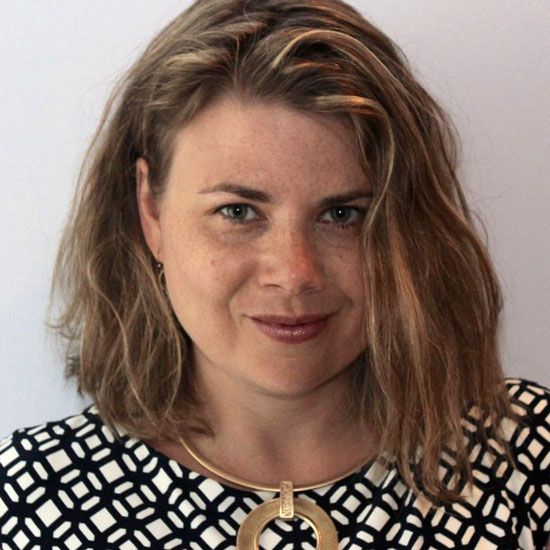Change Is Hard: Humanizing Post-COVID Technology Transformation in Higher Education
Former Analyst

Change is hard.
Tambellini analysts hear a version of this statement from almost every higher education institution considering a significant technology change. As a recent Harvard Business Review article pointed out, “At the heart of any radical change in higher education is a willingness by the administration and faculty to embrace new governance, processes, structures, and performance measures.” Successful modernization has more to do with culture than technology, and we all know that inspiring sustained change in individuals’ attitudes and behaviors is, well, hard.
Why Now?
According to Rebekah Russell’s latest Tambellini post, institutions understand that now is the time to embrace change and move core systems to the cloud. COVID-19 effectively surfaced the shortcomings of the industry’s aging legacy HCM, finance and student systems. Regardless of the associated challenges, higher education must modernize its business processes and technologies so that it can attract students, retain its workforce, and perform efficiently.
My work as a Tambellini analyst involves deep dives into institutional culture, particularly at institutions on the cusp of major change. I agree with Rebekah that institutions are accelerating towards modernization to improve their organizational agility and constituent experience. However, as campus leaders aggressively push for the change their institutions desperately need, they also need to consider the human implications of their timing.
Disruption as Opportunity
Every institutional stakeholder I’ve spoken with acknowledges COVID-19 as a disruptive force for higher education and their institutions, but also as individuals and team members. Some stakeholders—typically those in leadership positions—recognize the transformative opportunity associated with the pandemic. Whether they know it or not, they are referring to Jack Mezirow’s transformative learning theory and the power of the disorienting dilemma.
Mezirow was the first to define the disorienting dilemma as a destabilizing event that does not fit a person’s expectations and cannot be resolved without some change in behavior and viewpoint. The cognitive dissonance following a disorienting dilemma leads people to reevaluate previously unquestioned assumptions, seek out others having similar experiences, and redefine a “new normal” that encompasses their now-broadened life experiences.1
COVID-19 forced higher education students, faculty, and staff to adapt their expectations and behaviors to meet previously unimaginable circumstances. Right now, most people (including higher education professionals) are questioning their assumptions, seeking comfort in shared experience, and are generally more open to new ways of being. Institutional leaders who believe their employees are primed for change are intuiting Mezirow’s post-dilemma flux and the potential it holds.
Professional Transformation as Personal Work
As a society, we are all emerging (slowly and at varying rates) from a disorienting dilemma of massive proportions. Many higher education professionals went through deeply stressful work-life dilemmas, which included hiring freezes, furloughs, and unprecedented demands from campus leadership. Furthermore, institutional leaders must remember that COVID-19 disrupted more than the work lives of faculty and staff. A quick Google search returns dozens of articles and social media posts asserting that higher educational faculty, staff, and students are “not okay.”
While more profound disorienting dilemmas tend to have greater transformative potential, transformation comes with personal costs. The lived experience of transformative change is emotional and exhausting. Daily confrontation with uncertainty and vulnerability is hard. Professional transformation is personal work, requiring emotional strength and resources that some employees simply do not have right now. Therefore, while it is nice to hear campus leaders frame the post-COVID era as an opportunity for great change, it is also valid for front-line workers to say enough is enough.
How Campus Leaders Can Help
There is one thing all campus leaders must avoid at all costs: Do not be so opportunistic in your quest to leverage Mezirow’s post-dilemma flux that you create significantly more stress for an exhausted workforce already stretched thin. Your workforce (like your students) are people too. They deserve your care and compassion.
- Humanize the workplace. Earlier this summer, I proposed a framework for campus IT leaders seeking to humanize learning that revolves around four (and eventually five) principles: accessibility, security, respect, empathy, and ethics. These concepts are just as relevant for the higher education workforce. Treating faculty and staff with greater care and compassion as they engage in personal and organizational transformation is essential to retaining existing employees and optimizing outcomes.
- Embrace emotion. True transformation, even in the workplace, is emotional work. As part of change management, campus leaders who are uncomfortable with or fail to address emotional response run the risk of not connecting with, supporting, or inspiring their workforce. All change management models provide insight into the emotional response to transformation (even ADKAR, although emotion is not as prominent in ADKAR as in other frameworks). Look for your employees’ emotional work, respect it, and embrace it.
- Respond with empathy, but also action. Staff who express that “enough is enough” are often anticipating challenges based on previous implementation experiences. Leadership must seek out these experiences and address them directly with viable action plans for avoiding previous mistakes this time around.
- Walk the talk. Staff often worry that their institutions will not provide enough time, resources, or change management to leverage new technologies and support transformation. In other words, they do not want to waste hope or effort on projects that will not achieve sustainable change. Leadership must demonstrate their understanding of change that needs to take place, advocate for the resources to make it happen, and communicate all efforts to their workforce early, often, and in ways that demonstrate that they are listening.
1 This explanation oversimplifies transformative learning theory, but it hits the highlights of Mezirow’s foundational work.
Categories
Share Article:

Other Posts From this Author:
© Copyright 2025, The Tambellini Group. All Rights Reserved.